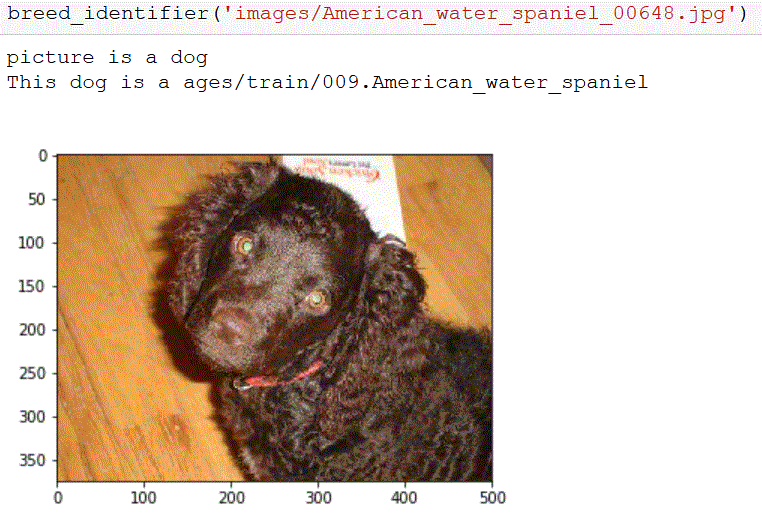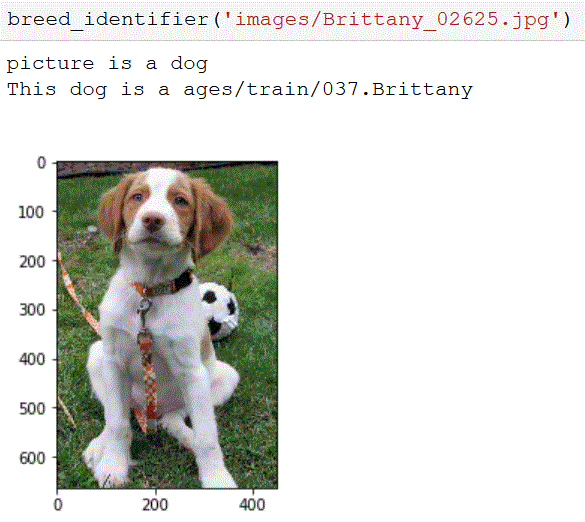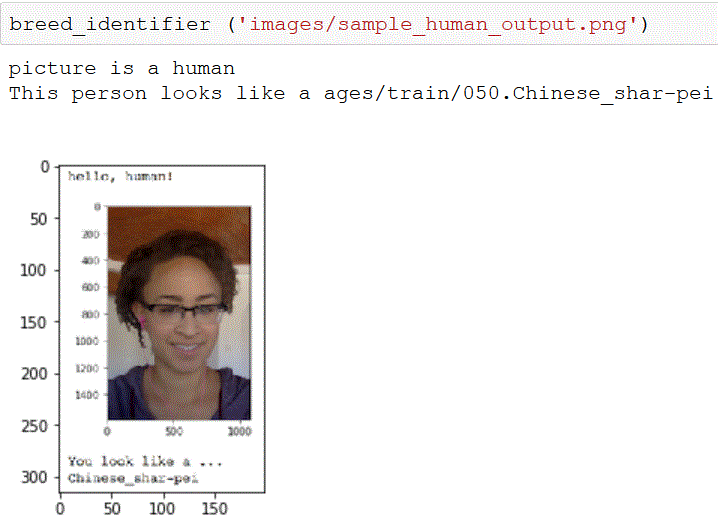This work is part of Udacity’s Data Science capstone project.
The goal is to create a pipeline that detects dog images and classifies them according to their breed using CNN . This model can be used as part of a mobile or web app for real world and user provided images.Given an image to the model, it will return if an image includes dog and an estimation of breed. If the image is not a dog, it will return the resembling dog breed. You can read more about this work in my blog here.
Step 0: Import Datasets
Step 1: Detect Humans
Step 2: Detect Dog
Step 3: Create a CNN to Classify Dog Breeds (from Scratch)
Step 4: Create a CNN to Classify Dog Breeds (using Transfer Learning)
Step 5: Write the Algorithm
Step 6: Test the Algorithm
You can download the dog and human data sets here This data set has 8,351 total images with 133 different breeds. The number of available images for the model to learn from is about 62 per kind, which might not be enough for CNN. In this real-world setting, the images have different resolutions, sizes, lightening conditions, also some images have more than one dog. By comparing the pixel intensity distribution of the same labeled images, I noticed, for example, photos for American_staffordshire_terrier are varying in contrast, size, and brightness. The Red, Green, and Blue channels’ intensity values found in these two images are distributed differently. This variation in data makes the task of assigning breed to dogs even more challenging.
Since we are dealing with a multi-classification problem here and the data is slightly imbalanced, I used accuracy evaluation metric and categorical_crossentropy cost function. But, first, the labels have to be in a categorical format. The target files are the list of encoded dog labels related to the image with this format. This multi-class log loss punishes the classifier if the predicted probability leads to a different label than the actual and cause higher accuracy. A perfect classifier has a loss of zero and an accuracy of 100%.
I used OpenCV’s implementation of Haar feature-based cascade object classifier to detect human faces in images. But first the images have to be converted to grayscale before using the detector. This detector has a 11% false positive rate tested on 100 sample dog images. So, I used pretrained ResNet_50 weights in keras to detect dog from images. If the predicted class of RestNet50 on ImageNet falls into the dog breed categories dog detector performs well and if not we should use another keras models as dog detector. But, it performed well without false positive.
Here I created a 4-layer CNN in Keras that classifies dog breeds, but the accuracy is about 12% which is a little better than random guessing. So, I leveraged the latest state of art techiniques like VGG, Inception V3, and ResNet to classify dogs. The Exception model outperforms all the other models with the accuracy of 86%.
extract_bottleneck_features.py - Some functions to process the pretrained models.
haarcascades - A folder containing the filters we will use in the human face detector.
images - A folder to place any images on which you would like to test the model.
requirements - A folder containing the necessary dependencies.
saved_models - A folder in which to save any models you train.
dog_app.ipynb - A jupyter notebook in which the code can be found.
The state-of-art Covnet models I implemented are VGG19, InceptionV3, ResNet50 and Xception. For each one, I downloaded the pretrained weights, and freezed all the pre-trained layers. The first fine tuning approach I used was to change the last fully connected layer to the number of dog breeds.
The Exception and Resnet50 models outperforms all the other models with the accuracy of almost 86%.
In general, Xception slightly outperforms InceptionV3 and Resnet on ImageNet dataset, also it is more computationally efficient.
The followings are the classifier outputs:
opencv-python==3.2.0.6
h5py==2.6.0
matplotlib==2.0.0
numpy==1.12.0
scipy==0.18.1
tqdm==4.11.2
keras==2.0.2
scikit-learn==0.18.1
tensorflow==1.0.0


